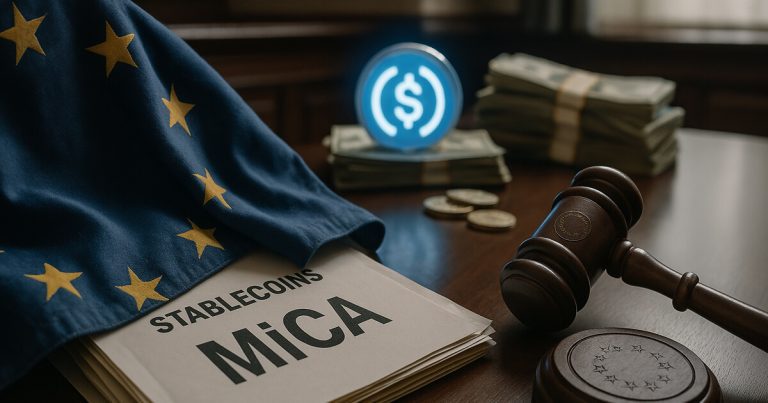Below are guest posts and opinions from Eneko Knörr, CEO and co-founder of Stabolut.
The market in European Union’s crypto assets (MICA) regulations aims to establish clarity and security within the crypto landscape. However, paradoxically, an overly restrictive attitude towards euro-imposed religions on stubcoins could inadvertently secure continued control of the US dollar in global finance.
Stablecoins have become essential to the global digital economy, enabling fast, transparent, and boundless transactions. the current, Over 99% of the Stablecoin market It is fixed in US dollars. Rather than challenging this monopoly, we must also regulate mica in Europe. It’s getting more and more difficult Euro-backed stubcoins gain significant traction.
“We don’t want stablecoins because we want to promote CBDC,” but Mica cleverly achieves the same results. Impressive Such a strict regulatory constraint that euro stability becomes virtually unfeasible.
The effect is subtle yet clear. MICA will effectively curb the innovation of private euro stub coins in favor of central bank digital currency. This regulatory environment has inadvertently brought great benefits to USD stubcoin. Strengthen the US dollar’s position As the world’s leading trading currency. Despite the story of a decline in dollar control, Stablecoins fuel the Renaissance For USD, embed it deeply into the global financial fabric.
Interestingly, this occurs when BRICS countries and the EU itself are actively trying to challenge the US dollar dominance in global markets. Ironically, the importance of stubcoins has increased dramatically as global trade moves more and more into blockchain-based transactions.
Strong USD-backed stubcoins play a pivotal role in ensuring that the dollar is maintained or even expanded.
In contrast, European ambitions to raise the euro through the CBDC have completely missed the mark. The EU’s belief that the Euro CBDC will be successful and will significantly improve the global impact of the Euro is not only false, but naive.
While CBDC may seem innovative on paper, history suggests that government-led initiatives struggle to match the creativity, efficiency and adaptability of private sector innovation. Furthermore, the CBDC essentially raises concerns about privacy, government overreach and consumer autonomy.
It’s really sad to realize that Europe is missing out on this important point.
The US appears to have a clear understanding of this dynamic. By resisting the temptation to launch a federal CBDC and instead fostering private stubcoins, US regulators ensure that innovation is fast, market-driven and globally competitive.
The mistakes with Mika in Europe were more than simply missing out on economic opportunities. This is a strategic error that could have deep geopolitical implications. By suppressing euro stability, Europe inadvertently strengthens its control of the US dollar at the moment when viable and globally accepted euro coins can provide meaningful competition and diversity.
Policymakers may believe they are protecting the financial system, but in reality they are building regulatory moats around irrelevance. As crypto adoptions accelerate globally, capital, talent and innovation flow into jurisdictions that embrace experimentation. The risk of a careful overreach in Europe is at risk of turning it into an audience in the next era of financial infrastructure.
If Europe is serious about the global status of the Euro, it needs to rethink its approach. The future of money can be shaped by people who enhance innovation, not by people who limit it. Unfortunately for Europe, mica may turn out to be the best thing that has happened so far in the US dollar.






